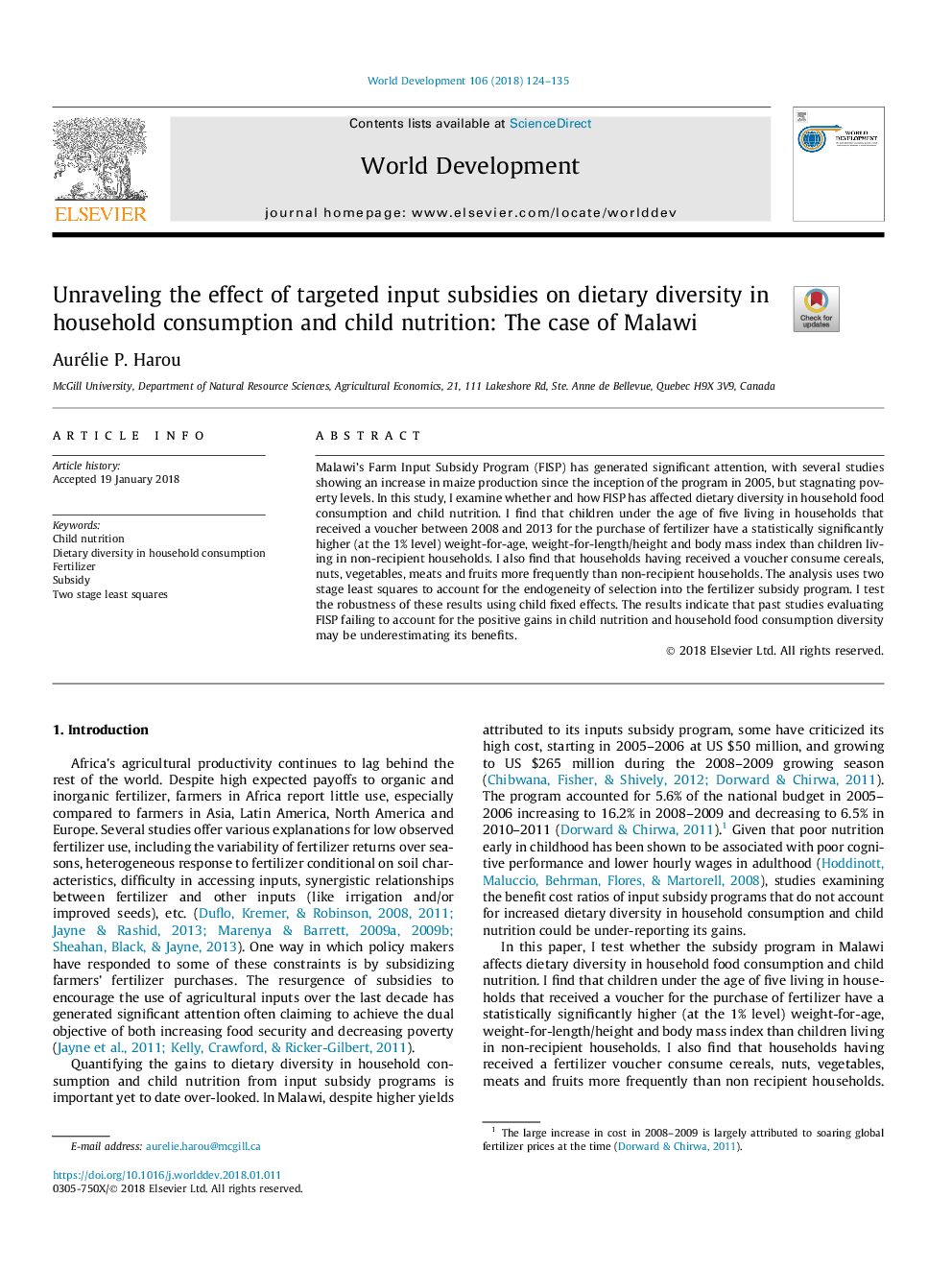| Article ID | Journal | Published Year | Pages | File Type |
|---|---|---|---|---|
| 7391795 | World Development | 2018 | 12 Pages |
Abstract
Malawi's Farm Input Subsidy Program (FISP) has generated significant attention, with several studies showing an increase in maize production since the inception of the program in 2005, but stagnating poverty levels. In this study, I examine whether and how FISP has affected dietary diversity in household food consumption and child nutrition. I find that children under the age of five living in households that received a voucher between 2008 and 2013 for the purchase of fertilizer have a statistically significantly higher (at the 1% level) weight-for-age, weight-for-length/height and body mass index than children living in non-recipient households. I also find that households having received a voucher consume cereals, nuts, vegetables, meats and fruits more frequently than non-recipient households. The analysis uses two stage least squares to account for the endogeneity of selection into the fertilizer subsidy program. I test the robustness of these results using child fixed effects. The results indicate that past studies evaluating FISP failing to account for the positive gains in child nutrition and household food consumption diversity may be underestimating its benefits.
Related Topics
Social Sciences and Humanities
Economics, Econometrics and Finance
Economics and Econometrics
Authors
Aurélie P. Harou,
